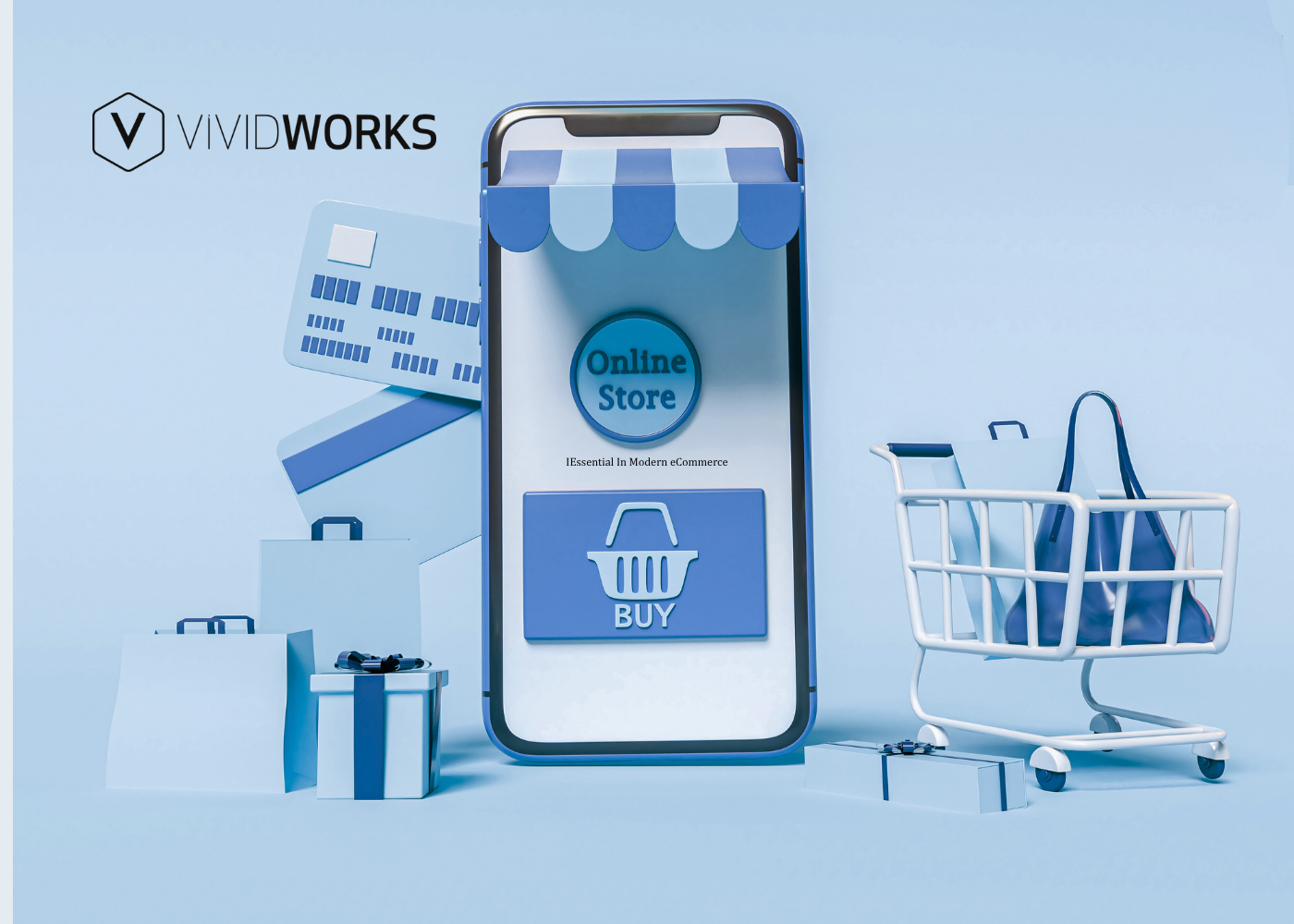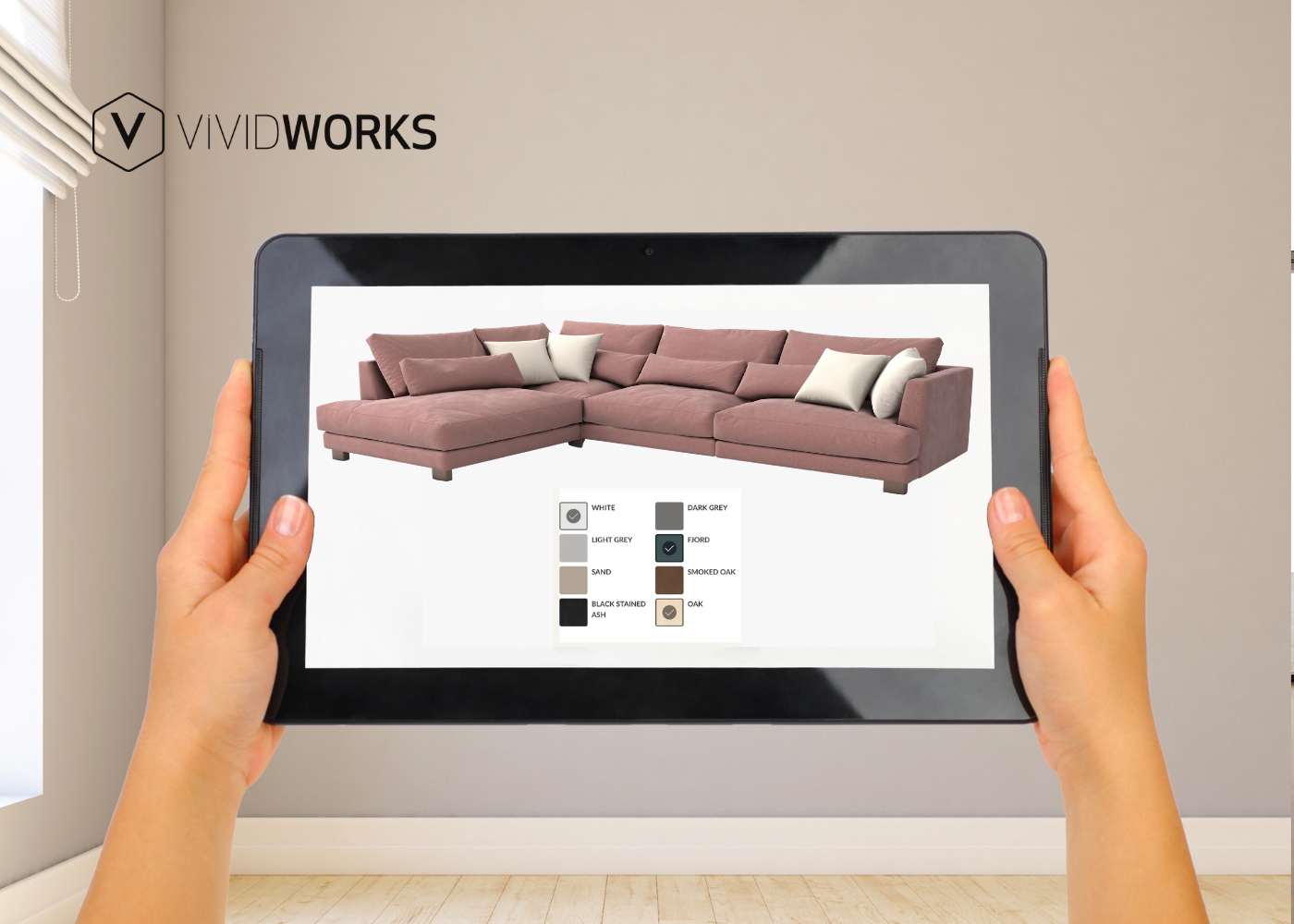Modern shoppers crave personalization, seeking tailored experiences that reflect their unique preferences, tastes, and needs. This is where the role of product personalization is highlighted, transforming the way customers interact with products and brands online.
Thanks to potential capabilities, eCommerce product customization solutions leverage customer personalization, improve sales and conversion rates, and build lasting loyalty. This article will explore common types of product personalization, how they can drive eCommerce success, real-world examples, and a guide to starting with personalization.
Right now, let’s get in!
What is Product Personalization?
Definition and Statistics
Product personalization is how customers can create or get a product to satisfy their specific demands thanks to the support of relevant technologies, tools, or salespeople. Compared to one-size-fits-all products in traditional, mass-production approaches, eCommerce product customization enables a direct, more profound co-creation feeling.
Why does personalization matter more than ever in the success of the eCommerce market?
- 71% of consumers expect personalization in their shopping experience.
- 80% of shoppers admitted that they’re more likely to make orders from brands that can offer personalized choices.
- 73% of leaders emphasize the power of AI in reshaping personalization strategies.
- 70% of buyers prefer products that are customized to their variations and tastes.
Types of Product Personalization
Product personalization comes in different formats, each offering distinct advantages. However, depending on the product complexity, business demands, and users’ flexibility, you need to select a proper technology. Let’s take a look at the 5 next common choices:
- Product configurators (2D and 3D)
Product configuration enables users to build and personalize a product by selecting features, materials, or other pre-defined components. The 2 most common types are 2D and 3D configurators, often found in fashion, furniture, automotive, and manufacturing. However, 3D visual configuration levels up personalization experiences with dynamic, real-time visuals in 3D views, helping customers fully understand what they are building.
- Product customizers
Product customization platforms for eCommerce focus on enhancing pre-designed products with customer-selected variants like colors or finishes. Instead of designing a new product from scratch, users only need to modify the necessary features to finish.
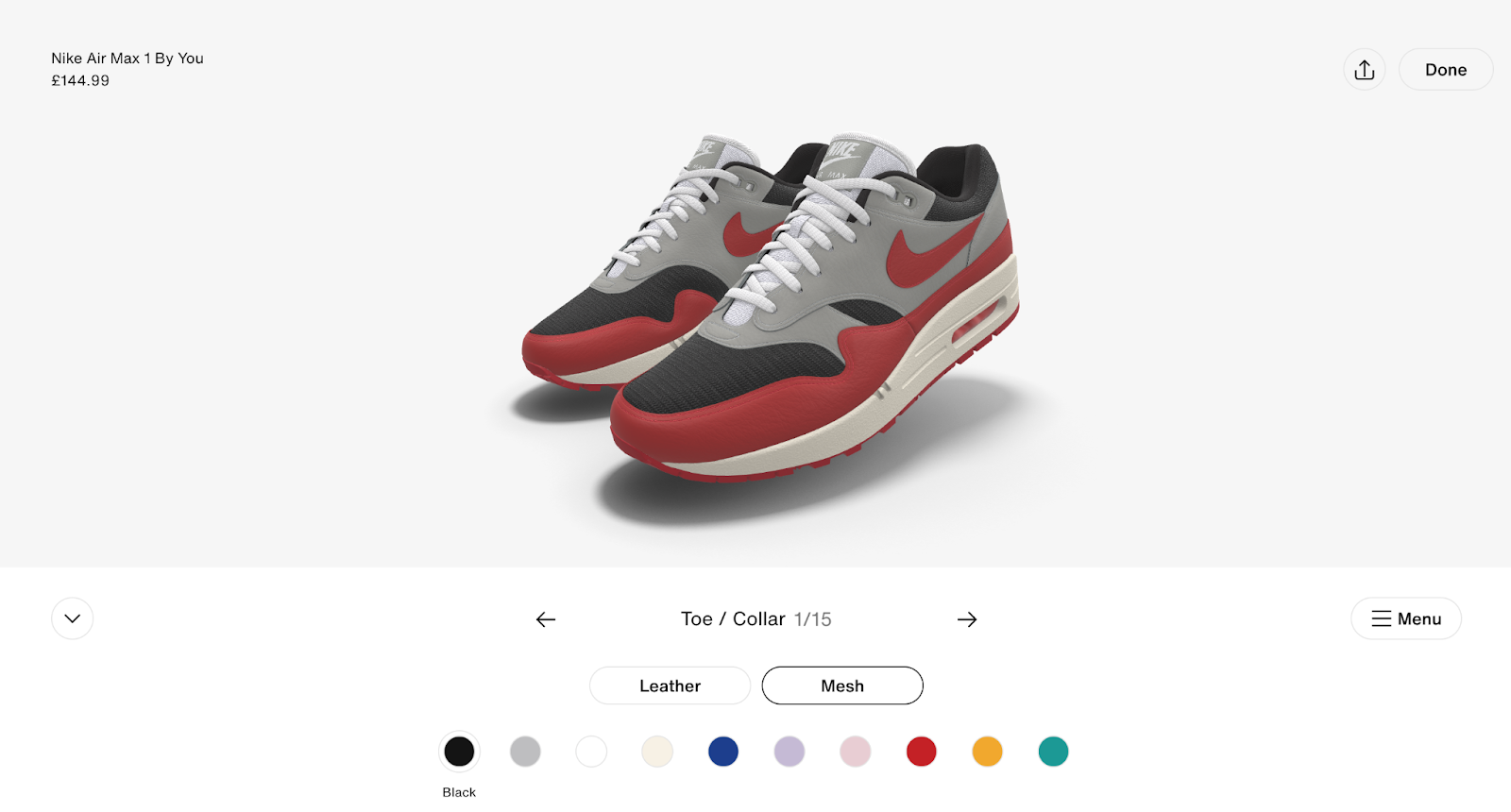
Many users find it difficult to differentiate product configurators vs. product customizers. However, in fact, configurators offer a higher level of customization and better control over product components. This key difference helps select the best fit for your demands.
- AI-Powered recommendations
Based on previous customer data, AI can personalize product listings, upsells, and cross-sells automatically. From that, you can deliver relevant product suggestions during customers’ journey or even help them discover options they might not have considered. As a result, you can capture customers’ attention and streamline your eCommerce sales.
- AR technologies
With Augmented reality (AR), customers can get a true-to-life feeling by visualizing their selected designs in a real space like their office, building, or home. This helps them easily evaluate how these products can fit with their tastes and then make informed decisions.
- Virtual try-ons
Often used in fashion, eyewear, makeup, jewelry, and cosmetics, these technologies give the chance to see how a product will look on them. This is essential to boost their buying confidence, improve abandonment cart rates, and especially reduce product returns. Virtual try-ons often combine AR, VR, and face/body tracking to achieve the best results.
How Product Personalization Empowers eCommerce Growth
#1. Drive customer satisfaction and boost word-of-mouth marketing
When customers ultilize product customization engines for eCommerce to personalize a product, they have a chance to join the design process that they have not had before. This can make them feel more satisfied and further spark their emotional connection with the brands and products. All of these are essential to drive their long-term loyalty.
Furthermore, many satisfied buyers are willing to share their interesting experiences with your products on social media, with their friends or relatives, or in their communities. This is truly effective for triggering the success of word-of-mouth marketing and social buzz.
#2. Increase eCommerce sales and conversions
When you build and fully clarify your dream products using real-time visuals and 3D configurators, your desire to buy them increases. This shortens the decision-making process and minimizes cart abandonment, streamlining eCommerce sales effectively.
Personalization also helps boost on-site time. Everyone spends more time on product customization for eCommerce: tweaking colors, testing options, and refining designs. Consequently, many shoppers even go as far as signing up to save or revisit their custom design, which increases the likelihood of conversion and opens the door for remarketing.
#3. Unlock unique revenue streams to drive more profits
With eCommerce product customization, you can start with made-to-order models or offer exclusive products with higher perceived value. Today’s shoppers are more likely to prefer their true, personalized experiences rather than just buying and using products. Thus, once you can satisfy this aspect, you succeed in standing out from competitors.
You can even create campaigns with limited-edition personalized items, which is one of the marketing tactics embracing scarcity and urgency while also helping drive revenues.
#4. Get data-driven insights for smarter business decisions
The adoption of product personalization not only brings engagement in real time but also provides a valuable stream of data for follow-up sales and marketing activities. Every customization choice shoppers make indicates helpful insights about their tastes. From that, you can have a deeper understanding of what customers truly want and need, which is key to effectively redefining your current product options or business strategies.
5 Real Cases of Product Personalization in eCommerce
#1. Furniture
Furniture is a high-consideration purchase with a high investment. Customers often personalize their design to match their existing decor, interiors, spaces, and preferences. Thus, using robust visual configuration tools is essential to seeing their choice precisely.
AUDO 3D Product Configurator, empowered by VividWorks, is a notable example in the furniture sector. It is designed to integrate seamlessly with the Shopify platform, allowing the brand to effortlessly showcase product personalization Shopify capabilities to users.
Customers can freely configure their own frame systems with inspiration, modules, and materials, and even incorporate accessories. Visual CPQ feature lets users configure the frames and see their precise prices simultaneously, eliminating checkout surprises. After finishing your designs, you can get a QR code to visualize them in your real space.
#2. Fashion
Many buyers admit that they can express their style or personalization with their outfits. That’s why customized product examples are common in the fashion industry, where you can create unique apparel through selecting sizes, colors, materials, and custom texts.

Adidas’s Uniform Customizer offers a similar experience: free design of shorts, jerseys, and other uniforms. Sport teams and individuals can add their names, logos, numbers, or random text that they might prefer and need to have in their unique uniform collections. Moreover, Adidas enables 3D-viewed technology to visualize the designs from all angles.
#3. Home and buildings
Using 2D images or PDF blueprints makes it challenging for clients and stakeholders to fully understand a construction design’s proper form and function. AR, which targets product personalization, adds value by overlaying digital models into real-world space. Users can preview how custom elements will fit and display in their homes and offices.
Sankyo Frontier, a leading modular space manufacturer in Japan, adopted VividWorks 3D configuration software to transform its sales processes. This configurator is known as a 2-in-1 solution for eCommerce product customization, where users can freely configure layouts (lighting, floors, and walls) and visualize them in their actual environment with AR. Consequently, they can have an in-depth understanding of their finalized space design.
#4. Makeups and Beauty
When shopping online, customers often struggle to choose the right beauty products (e.g., lipsticks) for their skin or face. That’s when retailers or brands need the role of virtual try-on tools—they offer a risk-free way to test with different variations before purchasing.
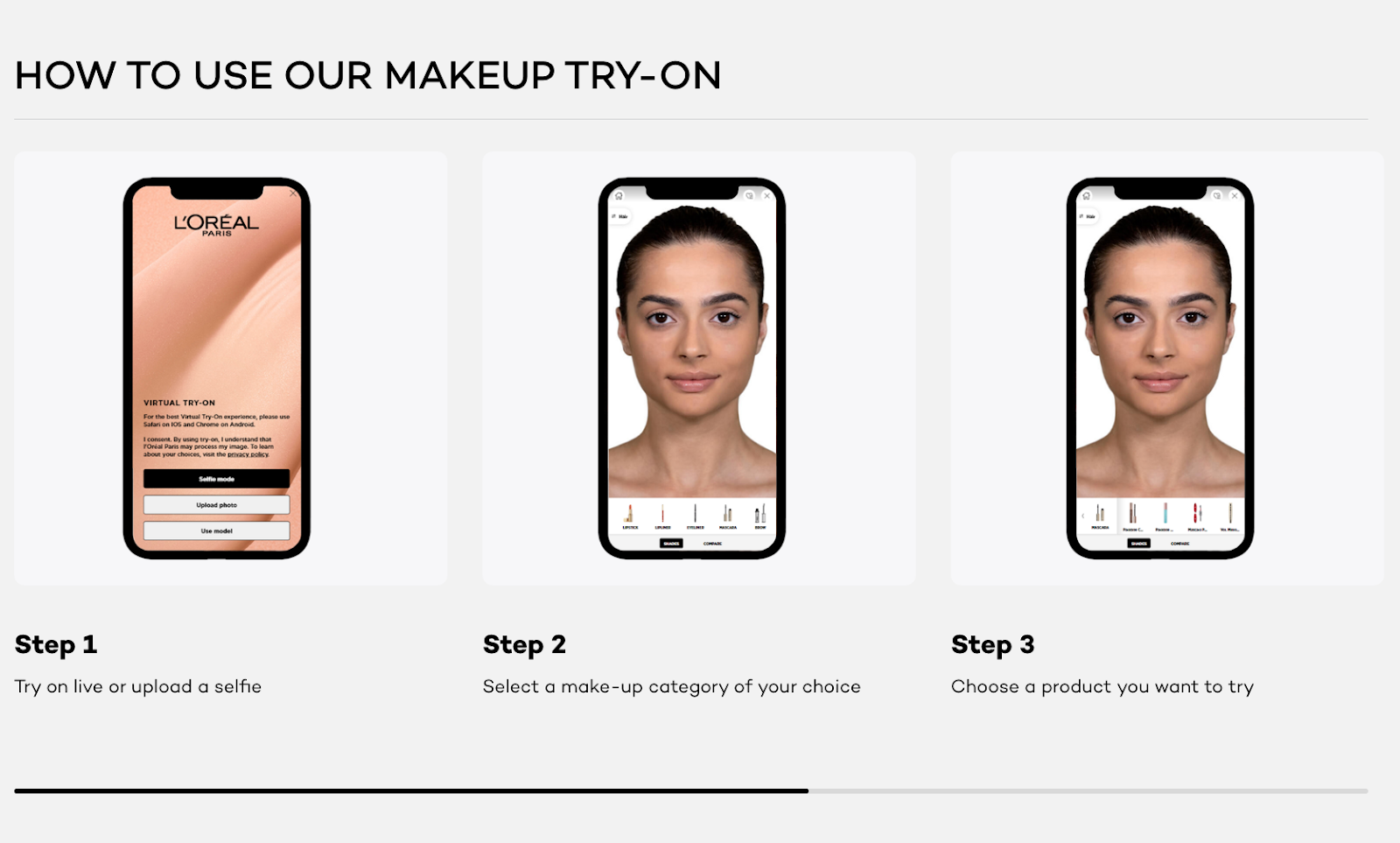
L’Oreal is one of the first beauty brands to utilize virtual makeup try-on to sell makeup products. By visiting its website with targeted products and your smartphone’s camera available, you can experiment with lipstick, eyeshadow, foundation, or hair colors easily.
#5. Retailing
Many large retailers turn to managing their inventories and product categories through auto systems and AI-driven technologies. AI-powered recommendations have emerged to help shoppers find accurate choices or discover relevant products quickly. This is key to boosting their overall browsing experience on their site and encouraging repeat visits.
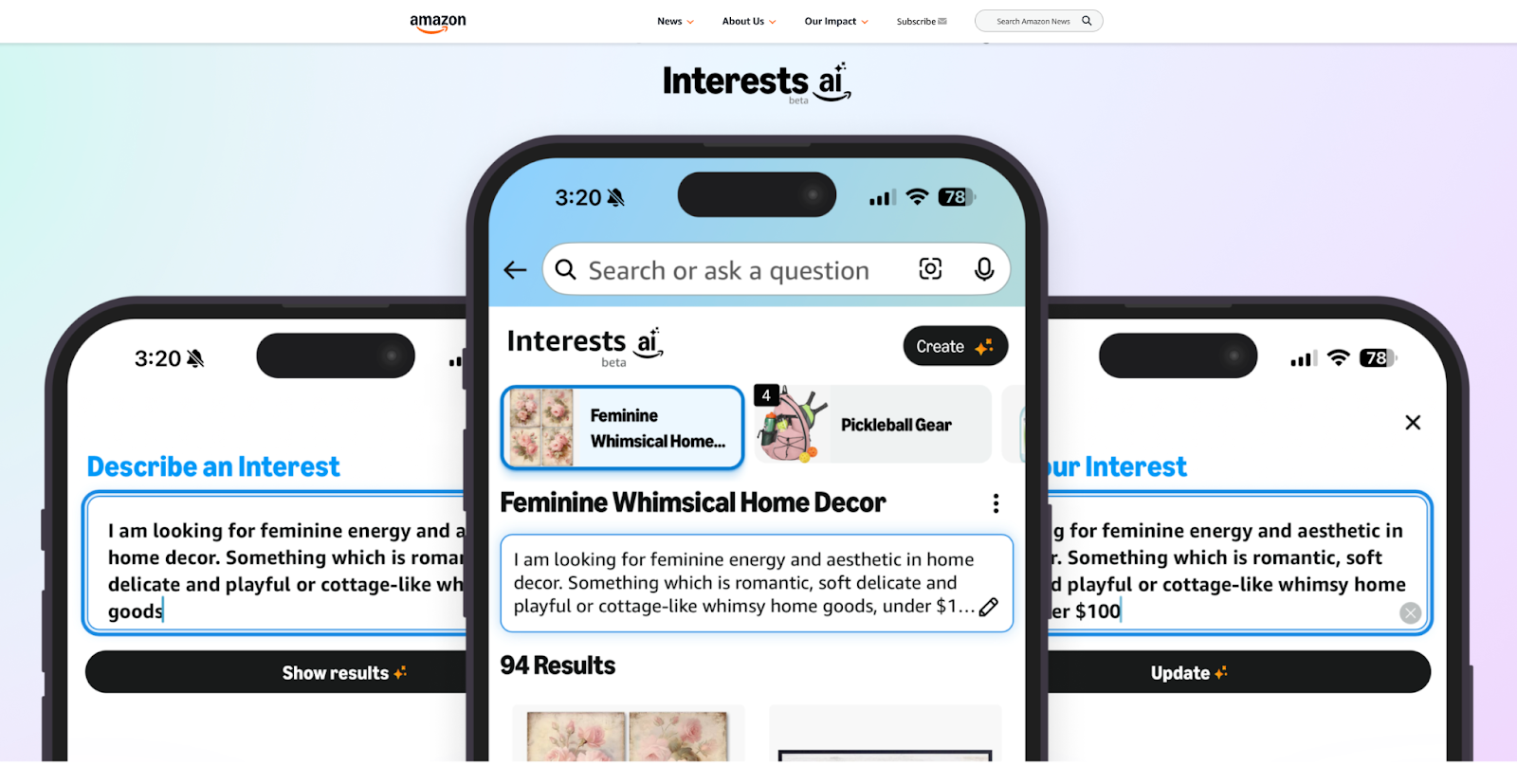
Amazon’s AI-powered “Interests” feature is one interesting example here. This feature analyzes browsing and buying history to automatically suggest new products, categories, and even content that aligns with shoppers’ interests, hobbies, and passions. From that, they will not need to take much time to search while purchasing quality items.
Checklist to Get Started with Product Personalization
Here’s a quick checklist that you should consider for eCommercr product customization:
- Research and validate the possibilities of your product personalization ideas
- Select a proper tech, type, and supplier to optimize the user experience
- Follow a guide on how to set up the product customizer, configurator, etc.
- Start with small and scale based on your data-driven insights
- Ensure the customization process is intuitive and responsive for every user
- Provide users with clear and precise feedback
- Track and refine personalization solutions if needed.
Talk to us for helpful expert insights on how to launch product configurators successfully!
Table of Content
-3.avif)
Streamline your process today!


